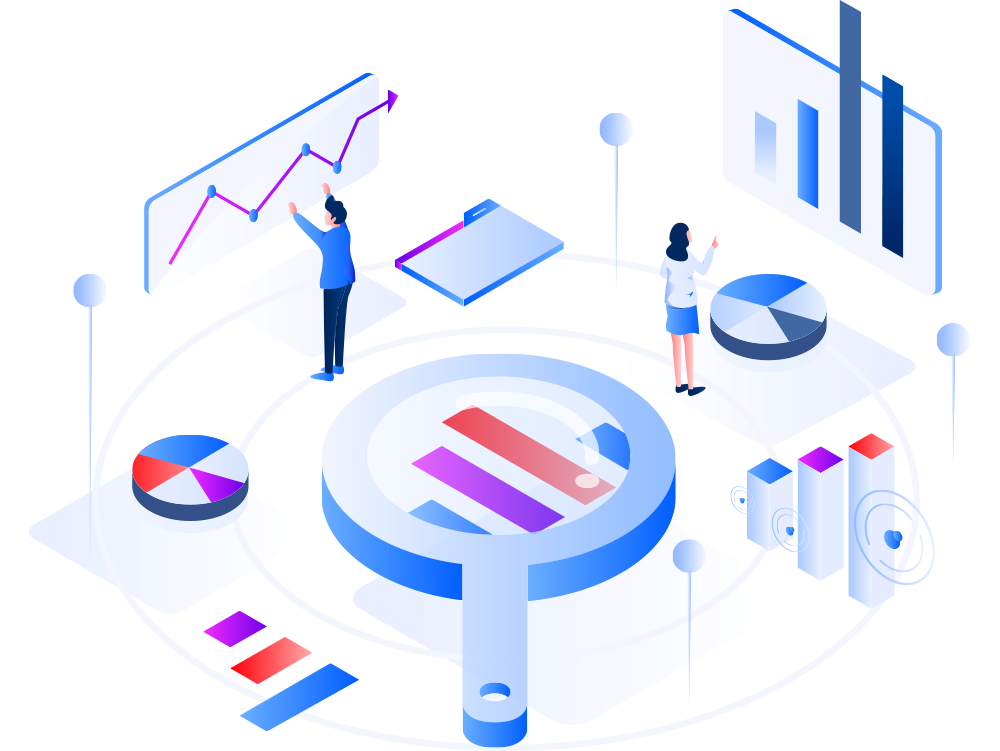
e- Commerce Web Development
E-commerce web development is the process of building an e-commerce website. Front-end and back-end development for e-commerce sites include checkout systems, payment processing, site security, and more. Keep reading to more about e-commerce web development At Vintage Digital Solution website development for e commerce understands your business needs and creates scalable e Commerce websites and mobile apps that boost up the conversion rate as per today market strategies.
Are you eager to get your e commerce business off the ground?
With us, you will experience custom e-commerce web Development, responsive design, secure (HTTPS) website, and robust SEO, all aimed towards delivering conversions. e-commerce Web development is the process of building and designing an e-commerce website where consumers can purchase products online. Because e-commerce websites are so popular with consumers, developing an e-commerce website can help you generate more conversions and revenue for your business.
The best way to ensure your e-commerce web development team provides a better user experience on your site is by hiring one with experience designing and/or developing for e-commerce.
With any luck Vintage Digital Solution , you can find e commerce website development services that are familiar with the latest in e-commerce best practices and can produce a site that will delight your customers and boost your conversion rate.
Here are some of the top elements to consider when developing your e-commerce website:
- PCI compliance and web security.
- SEO (search engine optimization).
- Multiple payment options and gateways.
- CMS (content management system) integration.
- Mobile-responsiveness.
- Shopping cart design.
- Product filtering.
If you're using a SaaS platform, you may need more frontend work than anything else though you may also want someone well-versed in building APIs. While most SaaS platforms have a relatively robust set of apps with pre-built integrations, further complexity is best handled by an expert.
Here’s a comprehensive guide on the key steps and considerations in e-commerce web development:
Planning and Strategy
Market Research: We will Understand the target market, customer needs, and competitors.
Define Goals: Clearly define the objectives of the e-commerce site (e.g., sales targets, customer acquisition).
Product Range: Decide on the range of products or services to be sold.
Choosing the Right Platform
Hosted Solutions: Platforms like Shopify, Big Commerce, and Wix provide an all-in-one solution with hosting and built-in features.
Self-Hosted Solutions: Platforms like Woo Commerce (WordPress), Magento, and Open Cart require separate hosting but offer greater customization and control.
Design and User Experience (UX)
User-Centric Design: Focus on creating an intuitive and easy-to-navigate interface.
Responsive Design: Ensure the site is mobile-friendly and works well on all devices.
Brand Consistency: Maintain consistent branding with colors, fonts, and logos that reflect the brand identity.
Navigation: Implement clear and logical navigation menus, categories, and search functionality.
Core Features
Product Pages: Include detailed product descriptions, high-quality images, videos, reviews, and related products.
Shopping Cart: Provide a seamless shopping cart experience with easy addition and removal of items.
Checkout Process: Optimize the checkout process to be simple and quick, minimizing the number of steps.
Payment Gateway Integration: Integrate multiple payment options such as credit/debit cards, PayPal, Apple Pay, and other local payment methods.
Security: Implement SSL certificates, data encryption, and secure payment gateways to ensure data security and customer trust.
Advanced Features
User Accounts: Allow users to create accounts for faster checkouts, order tracking, and personalized experiences.
Wish Lists and Favorites: Enable customers to save items for later purchase.
Product Recommendations: Use AI to recommend products based on user behavior and purchase history.
Inventory Management: Integrate inventory management to keep track of stock levels and avoid overselling.
SEO Optimization: Optimize site content for search engines to improve visibility and organic traffic.
Backend Development
Content Management System (CMS): Choose or build a CMS to manage product listings, content, and updates easily.
Database Management: Design and implement a database to store product information, user data, and order details.
Scalability: Ensure the backend can handle growth in traffic and transactions.
Testing and Quality Assurance
Functionality Testing: Test all features to ensure they work as expected.
Usability Testing: Conduct usability tests to identify and fix any user experience issues.
Performance Testing: Test site speed and performance, ensuring fast load times and smooth operation.
Security Testing: Perform security audits to identify and fix vulnerabilities.
Launch and Deployment
Domain and Hosting: Secure a domain name and reliable hosting service.
Pre-Launch Checklist: Verify that all features, links, and functionalities are working correctly.
Go Live: Deploy the website and monitor its performance closely during the initial period.
Post-Launch Activities
Marketing and SEO: Implement digital marketing strategies such as email marketing, social media campaigns, and SEO to drive traffic.
Customer Support: Provide customer support through chat, email, or phone to assist with inquiries and issues.
Analytics: Use tools like Google Analytics to monitor traffic, user behavior, and sales performance.
Continuous Improvement: Gather feedback, analyze data, and make ongoing improvements to enhance the site’s performance and user experience.
Developing an e-commerce website involves careful planning, choosing the right platform, focusing on design and user experience, implementing core and advanced features, ensuring robust backend development, thorough testing, strategic launch, and continuous post-launch improvement. By following these steps, you can create a successful e-commerce platform that provides a seamless shopping experience and drives business growth.

